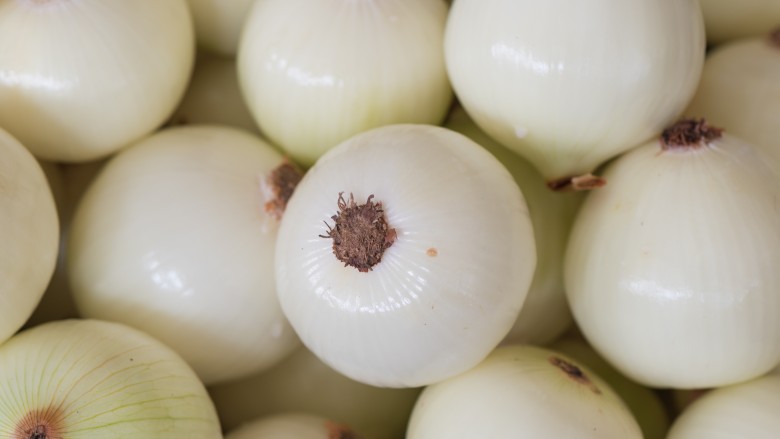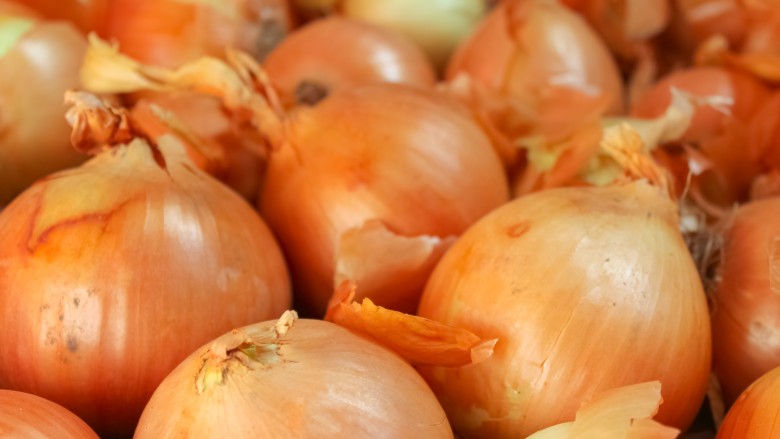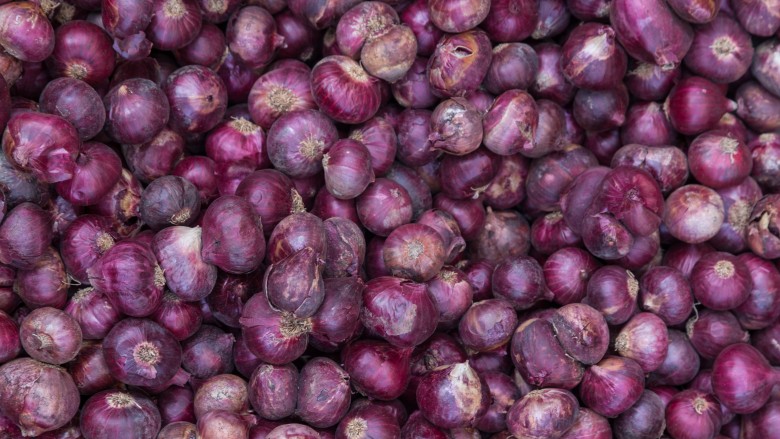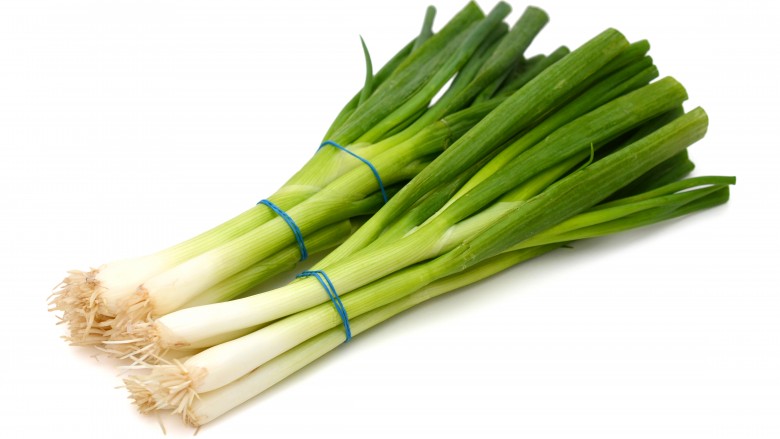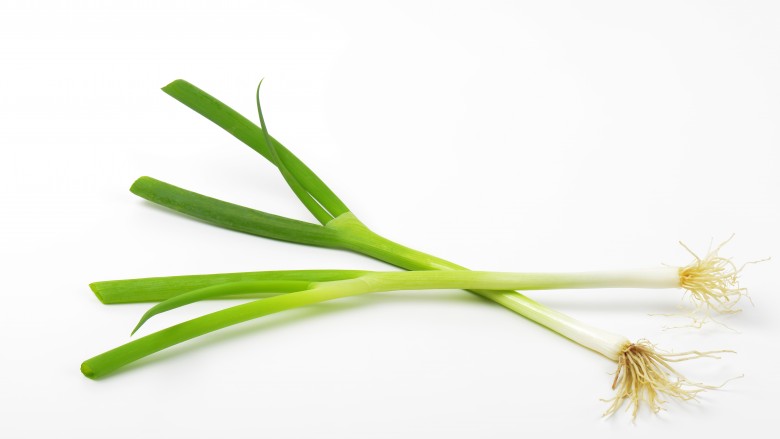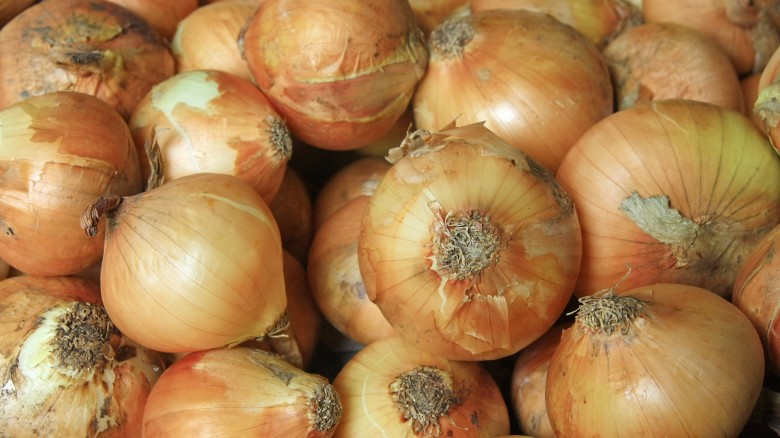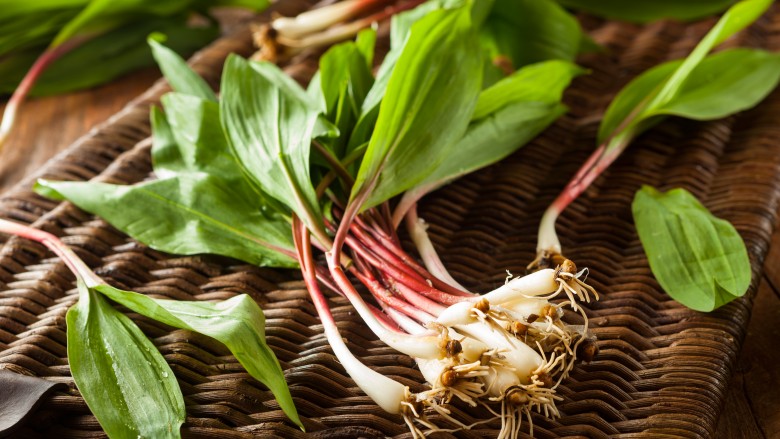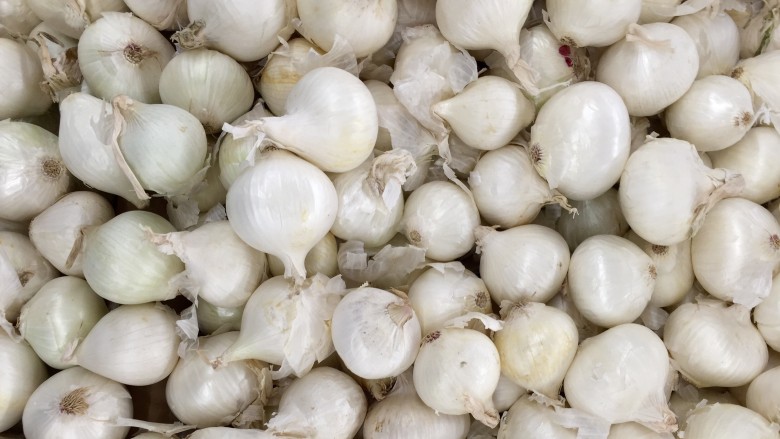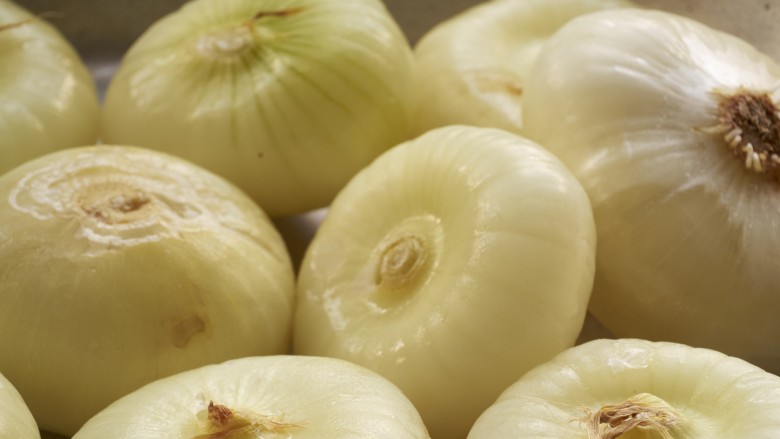What Onions Should You Really Be Cooking With?
Navigating modern life is challenging enough without having to deal with the confusing onion landscape at the grocery store, amiright? If you've ever found yourself reading a recipe and wondering why it calls for a certain type of onion over another, you're not alone. All varieties of onions come from the same family of alliums that include garlic and chives. That said, they're available in a wide range of colors, textures, tastes, and flavors. Depending on what you're cooking up, you may want to choose a particular type that's more pungent, mild, or sweet.
When it comes to enhancing your culinary masterpieces, onions are indispensable as they tend to help form the flavor base. By imbuing the foundation of your cooked foods with the onion's uniquely sweet, earthy flavor and adding that subtle, indefinable peppery heat when onions are served in raw preparations, you're giving your dishes their due TLC. The truth is that even if you already use onions as the base of nearly every dish you make, you might still find the dozens of onion varieties out there dizzyingly perplexing.
Even though onions are generally good year-round, making them versatile and handy, they still kind of sort of live in seasons. From March through the end of summer, you can expect to find younger onions that are perfectly mild, delightfully sweet, and ideal for serving raw in salads or scattered atop cooked dishes. As the cooler months begin, the onions will have matured and developed a stronger flavor more suited to cooked preparations. Still, many types of onions live within these broad categories of seasonality.
With so many kinds of onions to choose from, I want to offer up a little bit of help to make shopping for onions less overwhelming.
White onions
While similar in flavor to yellow onions, white onions tend to have a slightly less nuanced flavor. They are plainer (i.e., milder), which can be a good thing if you want to serve them raw. As their name suggests, these onions are white inside with white skin. Since they are so plain Jane in nature, white onions are suitable for basically any preparation. They're as good tucked into your favorite sandwich as they are chopped up in a salad. They can withstand pickling as well as good old-fashioned saute.
White onions are available and good to cook with year-round. Choose firm, unbruised ones the way you would with their yellow cousins. You can store them at room temp for a couple of weeks or in the fridge for longer. These guys are so easy to deal with.
Try this simple white onion salad from The New York Times when you want onion to be the star. Accented by vibrant citrus, the dish is unexpectedly wonderful.
Yellow onions
Yellow onions are fairly common in everyday cooking. As they possess deep flavor without being overwhelmingly pungent — like, you won't cry your eyes out preparing them — these onions are extremely practical. In most grocery stores, you'll find two varieties of yellow onions: plumper Spanish onions and the slightly smaller standard type. They taste almost the same, but Spanish onions are usually a little sweeter and milder, making them more suited for serving raw. You can use yellow onions for anything. You can achieve profound sweetness when you caramelize them, gain depth of flavor when you use them as enhancers for soups and stews, and get to the delicious root of their goodness when you prepare a French onion dip.
Yellow onions are always available! Touch them before you buy. Go for the ones that look clean and unbruised with some heft to them. I always have yellow onions on hand and go through them within a week or two. If that sounds like you, feel free to store them in a cool, dark place at room temp — no fridge required. If you plan to have them hanging around for much longer, stick them in the driest compartment of your refrigerator.
This recipe for classic dip comes from Food Network and highlights the sweetness of cooked yellow onions.
Red onions
I'm a big fan of red onions, as I love their unapologetically pungent flavor and zest for life. They bring a lot to the table! Crunchy, flavorful, and bold, red onions are a lovely shade of burgundy with a deep red hued skin to match. While they can be a tad spicy in their raw state, these onions transform into something altogether sweeter when cooked. I usually use red onions when I want a flavorful pickled garnish, a topping for my south-of-the-border tacos, or a bright addition to my boring salad. That said, red onions are also extremely tasty when caramelized and added to soup.
As one of the more common varieties of onions, red onions should be chosen and stored in the same ways as yellow and white onions. Don't you love how unfussy these varieties are?
Make a jar of these pickled red onions from Epicurious to have on hand. Say farewell to boring salads forevs.
Scallions
Long, thin, and rather elegant, scallions are incredibly versatile onions. They're recognizable by their white bottoms and green tops. Whether you cook them into a dish or serve them raw as a bright garnish, their sweet, mild flavor complements a variety of foods. They're ideal for dishes that benefit from a light onion flavor that's not too pungent, hence you'll find them frequently used in Asian dishes like stir-fries, stews, and dumplings. They lend just the right amount of crispness while still remaining rather juicy. I like to cook the white bottoms and thinly slice the green tops to use as a raw garnish in rich, savory dishes.
Scallions are at their peak during the spring and summer, when they've been recently harvested. When shopping for them, choose the bunches that have firm, distinctly un-slimey white bottoms and crisp green tops that aren't wilting into sad oblivion. Even though you may have transported them home in one of those ubiquitous plastic produce bags from the store, remove them from the bag once you get home. Storing them in the fridge in a mesh bag or not in a bag at all reduces moisture buildup, which can lead to rotting.
What better way to highlight scallions than with traditional scallion pancakes like these from Serious Eats?
Spring onions
Spring onions look just like scallions (um confusing!), but they possess an even milder flavor since they get harvested earlier in the season. Ah, the glory of youth. When cooked, this variety of onions becomes deliciously tender and oh-so sweet. Served raw, they tend to have more bite to them than those lookalike scallions. Since the time to get your hands on these young onions is short, they're best enjoyed as one of the stars in a warm-weather main dish. They're delicious left intact and grilled for an irresistible smokiness that balances their natural sweetness. You can also chop them up and pickle them for use as a garnish on hot dogs and burgers.
When shopping for spring onions, you want to look for many of the same qualities you would look for in scallions: firm bottoms and bright green tops. No slime, please. Similarly, you want to limit the amount of moisture in storage by removing them from any enclosed plastic bag scenario.
This recipe from Bon Appetit is a delightfully delicious way to highlight the flavors of spring onions by simply roasting them.
Shallots
Small and slightly teardrop-shaped, shallots are commonplace in French and Asian cuisines. They possess a pinkish-golden hue that's darker than that of yellow onions. Wildly complex, shallots are nuanced in flavor in the best ways. While they're distinctly milder than red onions, they are bolder than yellow ones and boast a unique garlic flavor. They are delicious sliced and fried as a crispy topping for salad, eggs, or anything else. When caramelized, they lend sweet essence to rich vinaigrettes. Deglazed in a pan sauce for meats and vegetables, they are unrivaled.
As with most onion shopping, choose shallots that look clean, unbruised, and shiny. They tend to have a relatively long life, so you can certainly store them at room temp in a cool, dark place for weeks.
A simple glazed shallot recipe like this one from Bon Appetit is a good one to have handy in your bag of tricks.
Vidalia onions
First popularized in a town in Georgia by the same name, Vidalia onions are a mild variety that won't make you tear up while chopping them. Hurray for that! They tend to look plump in the midsection and become narrow at the tops and bottoms. With their thin yellow skin, crisp texture, sweet flavor, and generally mild manners, Vidalias are pretty darn tasty when enjoyed in their raw form. Use them in salads, pickle them if you like, or caramelize them for extra complex sweetness.
While you can find Vidalia onions in stores starting in April, these onions peak in the late summer months of July and August when they hit their sweet-crisp apex. Pick ones that look relatively unbruised and store them in dry conditions in the fridge for long life.
Enjoy the uniquely sweet flavor of Vidalias in this recipe from Food.com. Honey and paprika lend plenty of complexity.
Ramps
In the interest of full disclosure, I should tell you I'm obsessed with ramps. As a gal living in New York, harsh winters are the norm. As such, the arrival of ramps at the local farmers market signifies the coming of spring and the end of chilly temps. Ramps possess small white bulbs with short white stems that grow into wider leafy green tops. They're known for their delicate onion-garlic flavor at the base and sweeter, milder green tops. Since they have such a short-lived availability during the early part of spring, they can be pretty pricey, at least in big cities like New York. (Grr.) Their price and rarity certainly add to the appeal, but really, their unique flavor makes all the difference. Ramps are addictively good grilled for a little sexy char, brighten up a springtime risotto, and lend deep flavor to savory biscuits and dumplings, too.
Like scallions and spring onions, you want to choose ramps that are firm with crisp leaves. To correspond to their devastatingly short seasonal availability, these diva-like onions don't last a super long time in your fridge either. If you're splurging on them, try to use them up ASAP. That said, they can probably last a few days if you manage to limit their exposure to moisture.
This ramps-starring recipe from Saveur makes a mean springtime pizza.
Pearl onions
While pearl onions are all about the size of gumball machine candies, they are available in yellow or white. In most grocery stores, you'll likely encounter the white ones. Unlike bulbous yellow, white, and red onions, these charming fellas are way milder and sweeter in nature. With their delicate flavor, they're delectable as a component in a meaty stew, elegant when glazed with a light sauce, and divine as a lightly pickled side dish. Since the most annoying aspect of these onions is the fact that they're challenging to peel, be sure to blanch them first before attempting the hair-raising task.
Since they're so small, you'll usually find pearl onions sold in bags rather than individually. You can store them the same way you would with bulb onions.
A creamy pearl onion gratin like this one from Williams Sonoma is likely to please everyone at the table.
Cipollini onions
About the same size as pearl onions, disc-shaped cipollini onions have papery yellow skins that are also difficult to peel. They are known for being incredibly sweet. Since they're naturally tasty without needing much done, these onions are best served as the star of a dish. Try simple preparations like oven-roasting, caramelizing, or sauteing to maximize their sweetness without overshadowing it.
As with pearl onions, cipollini onions are sold in bags instead of loose like the other bulbous onions. Choose the bag that speaks to you most and blanch them first.
This recipe from Food & Wine pairs sweet cipollini onions with balsamic vinegar and lemon to great effect.
Leeks
Last but not leeks. This type of onion looks a lot like scallions as far as shape goes, but they're much thicker and firmer. They have white bottoms and woody green tops. Hearty and flavorful, the white parts of leeks are perfectly mild and sweet when cooked. Since the green parts are pretty sturdy, you're better off saving them to flavor your next homemade stock rather than eating them. Leeks are achingly good when softened in risottos, stews, and casseroles.
Leeks are very hearty and tough winter onions that also tend to be rather dirty straight from the store. Be sure to rinse and soak them a few times to remove all the grit from the inner folds. Choose firm ones that aren't slimy at the bottoms and store them in a dry compartment of your fridge for one to two weeks.
This recipe from Food52 is perfect for highlighting the sweet, mild flavor of leeks. Just a splash of olive oil complements these onions immensely.
Fret not the next time you're faced with all the onion options at the store. Simply pull up this handy little guide.

